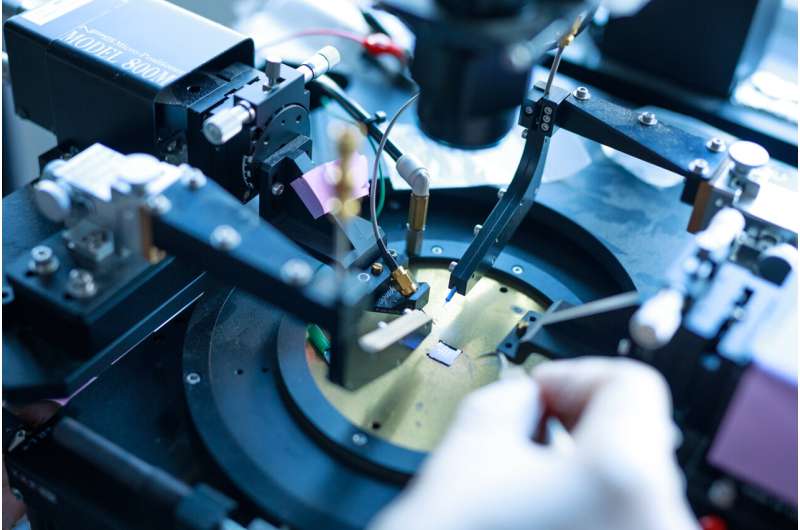
JULY 10, 2024 by Ingrid Fadelli , Phys.org
Collected at: https://phys.org/news/2024-07-generation-orbital-current-magnetization-dynamics.html
Electrons inherently carry both spin and orbital angular momentum (i.e., properties that help to understand the rotating motions and behavior of particles). While some physicists and engineers have been trying to leverage the spin angular momentum of electrons to develop new technologies known as spintronics, these particles’ orbital momentum has so far been rarely considered.
Currently, generating an orbital current (i.e., a flow of orbital angular momentum) remains far more challenging than generating a spin current. Nonetheless, approaches to successfully leverage the orbital angular momentum of electrons could open the possibility for the development of a new class of devices called orbitronics.
Researchers at Keio University and Johannes Gutenberg University report the successful generation of an orbital current from magnetization dynamics, a phenomenon called orbital pumping. Their paper, published in Nature Electronics, outlines a promising approach that could allow engineers to develop new technologies leveraging the orbital angular momentum of electrons.
“Our work was inspired by ongoing research in spintronics and orbitronics, the orbital analog of spintronics,” Kazuya Ando, Associate Professor at Keio University, told Phys.org.
“Spintronics has advanced through exploring the physics of spin current, the flow of spin angular momentum. Recent studies have highlighted the crucial role of orbital current, the counterpart of spin current, in solid-state devices. However, generating orbital currents has remained a significant challenge.”
The recent study by Ando and his colleagues draws inspiration from spin pumping, a well-established phenomenon that allows engineers to generate spin currents. The key objective of their study was to realize this phenomenon’s orbital counterpart, dubbed orbital pumping.
“We believe that demonstrating orbital pumping expands the fundamental understanding of orbitronics and opens new avenues for research and technological applications,” Ando said.
Orbital pumping essentially entails the generation of an orbital current via the dynamics of magnetization (i.e., the density of magnetic dipole moments induced in magnetic materials when they are placed near a magnet). To conduct their experiments, Ando and his colleagues specifically used a bilayer structure made of nickel and titanium.
“By applying a radio-frequencymagnetic field to the structure, we excited magnetization dynamics in the nickel layer, which, in turn, generated an orbital current in the titanium layer through the orbital pumping,” Ando explained. “We detected this orbital current electrically using the inverse orbital Hall effect, a phenomenon that converts an orbital current into a charge current.”
By applying a magnetic field to their nickel and titanium structure, the researchers were able to successfully demonstrate orbital pumping. The techniques they employed thus ultimately proved effective in generating an orbital current in an experimental setting.
“In the development of spintronics based on spin current, spin pumping has played a crucial role, revealing a variety of phenomena and functions arising from spin currents,” Ando said. “Similarly, our discovery of orbital pumping, the orbital counterpart of spin pumping, is expected to serve as a fundamental basis for new electronic technologies and physics based on orbital currents.”
The promising results attained by Ando and his colleagues may soon pave the way for new studies aimed at generating orbital currents via magnetization. These works could eventually lead to the introduction of orbitronic devices, a class of electronics that has so far been largely overlooked.
“Our future research will focus on further understanding the fundamental properties of orbital currents and their interactions with magnetization dynamics,” Ando added.
“We also aim to clarify the combined effects of spin currents and orbital currents to develop devices that leverage both spin and orbital angular momentum of electrons. Through these efforts, we hope to advance the fields of spintronics and orbitronics, paving the way for new electronic technologies.”
More information: Hiroki Hayashi et al, Observation of orbital pumping, Nature Electronics (2024). DOI: 10.1038/s41928-024-01193-1
Journal information: Nature Electronics

Leave a Reply